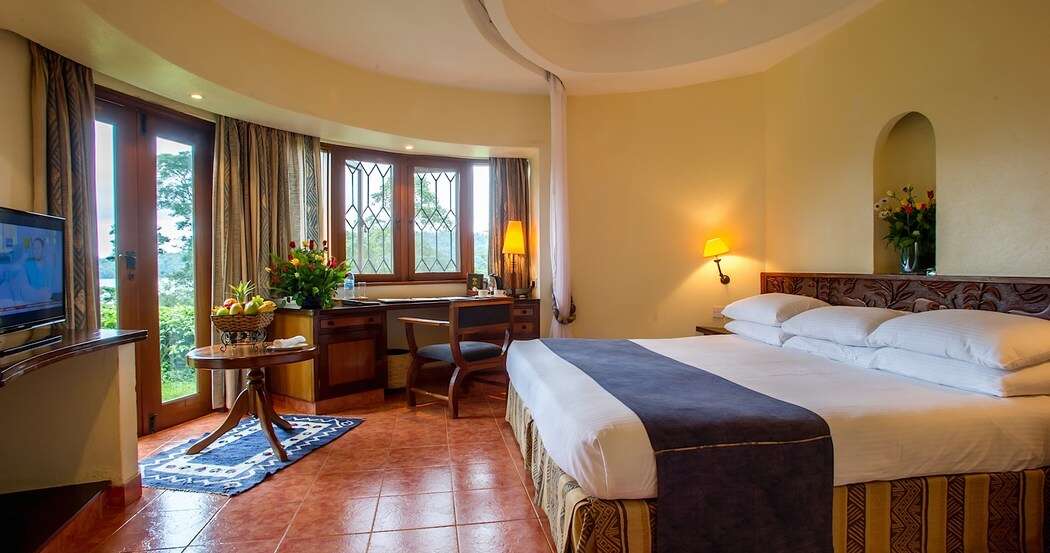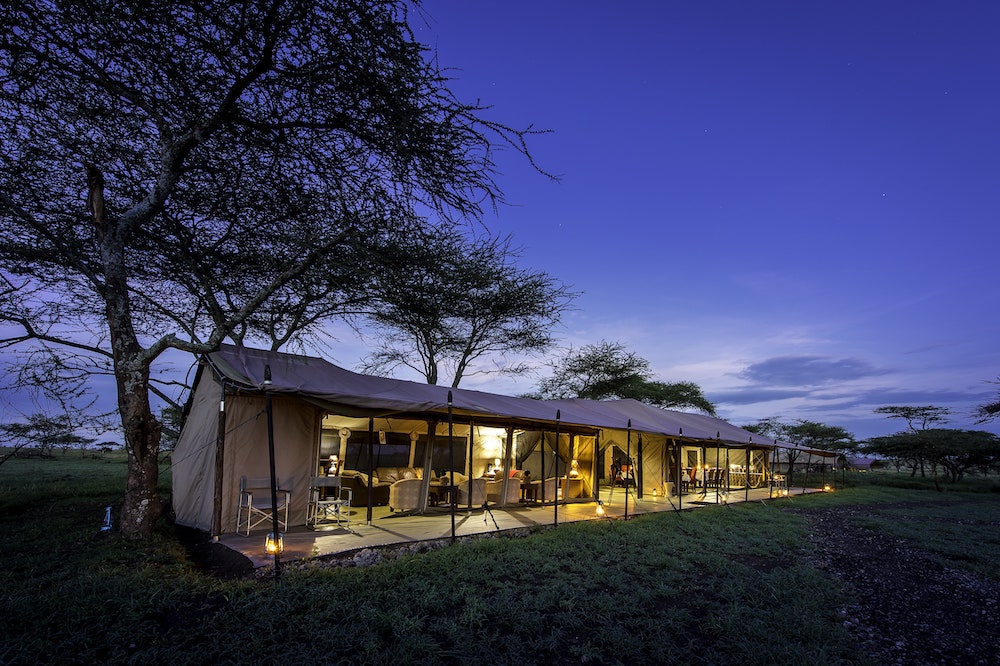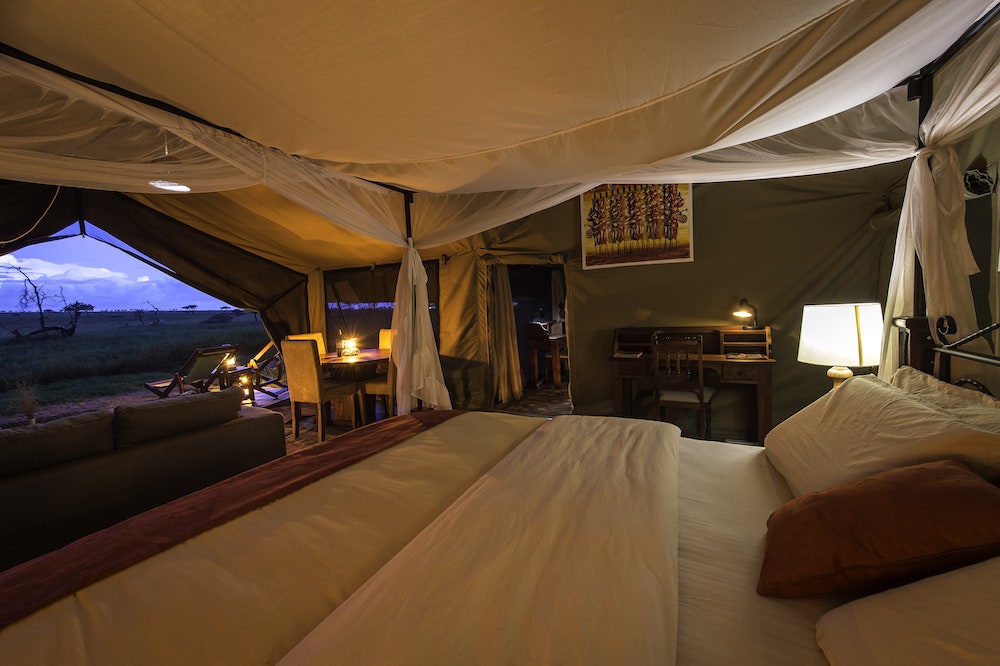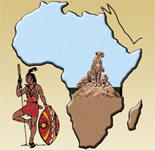12 Days Tanzania Africa Wildlife Photo Workshop Safari!!
fromThis itinerary takes you to the best places in Tanzania for wildlife photography including Serengeti National Park, the Ngorongoro Crater, and Tarangire National Park, plus an optional extension to the Northwest Serengeti and the famous Mara River. You will each enjoy your own row of seats in the vehicle, allowing access to both sides and ample space for your equipment. Our luxury tented camp locations, each private tent is furnished with real beds and bed sheets, private restroom facilities (with a real flushing toilet), and a hot shower. We will always have the opportunity for recharging our laptops, cameras, and other electronic gear. This will allow us to relax and savor our beautiful surroundings, but it will also afford us the ability to clean or recharge our gear as we go.
-
Reviews 0 Reviews0/5
-
Vacation Style Holiday Type
-
Activity Level
-
Group Size Small Group
Day 1, June -October: Arrival in Arusha, Tanzania – Serena Arusha
Arrive at Kilimanjaro International Airport in the early evening on KLM or any other flight. You will be meet and greeted and transfer to Arusha town (45 minutes) for dinner and overnight at Arusha Serena.

Day 2, June – October: Tarangire National Park – Maramboi Tented Camp
After an early breakfast, we drive to Tarangire National Park (2 hours to the main gate) and enjoy two days of game drives in this scenic park at the end of its peak time of the year. Herd animals from across the Great Rift Valley and surrounding conservation land, migrate into the park for water in the river and swamps. During this time elephant numbers can swell to over 6,500 inside the park, and predators are actively hunting the increased number of ungulates.
Tarangire National Park, is also considered the “Baobab Capital of the World” and renowned for its wild landscapes and diverse habitats. The Tarangire River, from which the park derives its name, is the only permanent water source within 1,625 square miles (2,600 square kilometers) of protected wildlife area. In addition to numerous animals, the park has over 300 species of birds and has the highest recorded number of breeding bird species of any habitat in the world.
Day 3, June – October: Tarangire National Park- Maramboi Tented Camp
Today after breakfast we will head straight inside the park and start our game drives. During this time at the end of the dry season, herd animals of all kinds (elephants, wildebeest, zebra, gazelles, and antelopes) migrate from the surrounding areas for the water found inside the park. This is the second largest migration of animals in Africa after the Serengeti Migration. Tarangire has a very large swamp, called Silali Swamp, which attracts animals and birds of all kinds. During the dry season, the famous giant rock pythons leave the swamp to avoid being stepped on by herd animals, and live in the trees on the edge of the swamp. Tarangire is also home to the last remaining pack of wild dogs in northern Tanzania. They remain an extremely elusive find.
Maramboi is a permanent tented camp with a total of 40 tents located ideally between Tarangire National Park and Lake Manyara National Park. The camp is 30 minutes outside of the main gate for Tarangire but offers quality accommodations as well as a stunning view of Lake Manyara.
Day 4, June – October: Lake Manyara the proceed to Ngorongoro Crater-Lions Paw Camp

Today we’ll drive from Maramboi to the village of Mto wa Mbu and Lake Manyara National Park for a game drive.
While Manyara is a relatively small park, it has diverse birdlife and is an ideal location for viewing hippo, giraffe, baboons, and Blue-faced Monkeys. We’ll enjoy a picnic lunch in the park. When we exit the park, we will continue through the village of Karatu and the Crater Highlands, checking in at the main gate for Ngorongoro Crater.
We then continue up to the rim of the Crater and to the eastern rim to arrive at Lions Paw Camp in the late afternoon in time for showers, a sundowner, campfire, and dinner. The benefit of being accommodated on the eastern rim of the Crater is a shorter and easier access to the Crater floor and we’ll avoid any morning crowds, as we will literally be the first to enter. Lions Paw is a mere 10 minutes from the Crater floor and actually inside the gate. The camp is comprised of only 7 permanent tents, providing an intimate setting in the Crater Highlands.

Day 5, June – October: Ngorongoro Crater- Lions Paw Camp
We leave camp very early probably by 5:30 AM so we can be the first vehicles on the Crater floor. Early mornings are an excellent time to see cats and there are far fewer tourist vehicles. Lions Paw is located inside the main ranger post so we are permitted to return to the camp for lunch and avoid the very public and very crowded picnic sites. Instead we’ll enjoy a hot lunch and discuss some of the photographic opportunities you enjoyed this morning.
We return to the Crater floor in the mid afternoon when the light it best, often at a time when the majority of tourist vehicles are leaving the Crater to return to the lodges.
Ngorongoro Crater is the World’s Largest Unflooded Caldera and one of seven World Heritage Sites designated in Tanzania. This means the entire rim of the old volcano is intact. The Crater is a memorable experience, while only 100 square miles in total, it also offers six distinct habitats: acacia forest, swamp, short grass, long grass, riverine, and woodland. Each of these habitats attract a variety of animals.
Ngorongoro Crater is also the world’s first multipurpose land use experiment, combining tourism, research, archaeology, wildlife management, grazing rights, and farming. The rim of the Crater sits at 7,800 feet in altitude and the Crater floor descends to 5,000 feet above sea level. The Crater is home to almost 30,000 animals in an area naturally enclosed by the slopes of the volcano. The Crater is the best location for viewing black rhino and the huge old bull elephants. There is not enough vegetation to support the large cow and calf herds, but the old males retire to the Crater for the wonderful swamp grass and acacia forest. The only animals you will not see in the Crater are impala and giraffe. It is not known why impala do not inhabit the Crater, but giraffe are unable to descend the steep grade without lowering their heads, which raises their blood pressure to dangerous levels.
Day 6, June – October: Sametu Camp – Central Serengeti

Enjoy another very early morning game drive on the Crater floor and then ascend on the western rim no later than 11:30 AM. Continue to the central Serengeti where you will spend the next three days exploring this area abundant with cats. At this time of the year, the central Serengeti should be bursting with wildlife as the pregnant females and dominant males are streaming into these areas as they march toward the southern plains by calving season.
Sametu Camp has 8 luxury permanent tents, with flush toilets, running water in the sinks, and 24-hour electricity. A large dining and lounge tent completes the sense of relaxation and intimacy of the camp.
Day 7–8, June – October: Central Serengeti -Sametu Camp

You will spend these next days with plenty of time to explore the vast areas of the central Serengeti including the nearby Sametu Kopjes, the Maasai, Simba, and Moru Kopjes as well as the Seronera River Valley. The migration is not nearly as predictable as the books indicate and the herds will follow rain clouds and divert to many different areas. Using Sametu as your base camp, you will be able to venture to the western corridor where you may see wildebeest, which have an extraordinary sense of smell, and will find rain clouds. On the other hand, zebra have an extraordinary sense of sight and they often can detect predators before wildebeest sense danger. This is one reason why the wildebeest and zebra stay close and migrate together. Our unique location allows us ultimate flexibility and traditionally very abundant wildlife this time of year.
Serengeti National Park is one of the most famous wildlife areas in the world. The park’s 5,700 square miles are part of the 9,600 square mile Mara-Serengeti ecosystem, home to incredible herds of wildebeest and other grazing animals. It is the largest national park in Tanzania, with a staggering animal population of about 4 million within 14,763 square kilometers. It is the largest wildlife sanctuary in the world and the site of one of the most breath taking events in the animal kingdom—the migration of more than one million wildebeest. The area consists of treeless central plain, savannah dotted with acacia and granite outcroppings called “kopjes,” and riverine bush and forest in the north. The park’s name is derived from the Maasai language “SIRINGET” which means “endless plains.” The famous wildebeest migration that people dream to experience is actually a dynamic process taking a full year to complete. There are different events that happen at different times of the year and in different locations in this park. The basic migration occurs in a clockwise direction, but it is guided by rain and the growth of grass, so at any time the animals can ignore tradition and just follow rain clouds in a more haphazard direction.
There are three seasons in the Serengeti. They are short rains, long rains, and dry season. During the start of the short rains of November and December, the large wildebeest and zebra herds leave the northern part of the Serengeti ecosystem (the Mara in Kenya) and travel east and south into the short grass plain of southern and eastern Serengeti.
The herd traditionally splits the migratory routes, with pregnant females and dominant males moving directly south, through the Seronera area and onward to the shortgrass plains of southern Serengeti. The bachelor males move easterly around the Gol Mountains and then south through the Gol Pass, the Gol Kopjes, and onto the southern plains. The female wildebeest need to be in this area to begin the calving, as they rely on this particular kind of grass, which is high in calcium, potassium, and magnesium used for milk production.
Wildebeest calving can begin anytime between January and March. More than 800,000 females will drop their calves within a three week period of time, so predator/prey activity is at a peak. The short grass plains also offer some of the best protection against predators, as they are more visible to the herd animals. Herd animals will remain in this area as long as there is decent rain that continues in the following months, although they only need short bursts of rain to be happy. April is usually the month of long rain, meaning it rains fairly constantly and heavy. At this time, the herd usually begins to move to the Central Serengeti and begins to prepare for the wildebeest rut of May and June. These are some of the most amazing herd sightings, as the male and female herds reunite for breeding. The herd movement continues both west and north between May usually to the end of July. At this point, the herd disperses a bit and males without females may migrate directly north to the Mara and some may move to the famous Western Corridor and remain year round in the Serengeti. If rains are normal, we can expect the majority of the herd to leave the Serengeti by the middle to the end of July.
The dry season of July–October is excellent for viewing cats of all kinds. In fact, some cats are easier to locate because they must remain more active during the daytime to search for dwindling food. During these months, clients usually stay in the Central Serengeti, the Western Corridor, or northern Serengeti-Loliondo. The famous river crossings, which everyone hopes to see, are hard to predict and can occur in a short number of days.
Day 9, June – October: Seronera / Mara River-Extension to River Camp Northwest Serengeti and Mara River or Serena Arusha, Arusha (for departure)
For those participants not extending to the Mara River, you will game drive to the Seronera airstrip and fly back to Arusha arriving by 12:15 PM for lunch at the Arusha Coffee Lodge and time for some shopping. Enjoy a dayroom at Serena Arusha hotel and transfer early evening to Kilimanjaro International Airport (JRO) for your international flight.
Those extending enjoy a day’s game drive to the Mara River, located in the northwestern Serengeti. The full-day game drive will take you though the Lobo Valley and Bologonja on your way to the Mara River which is an absolutely fascinating journey with lots to see. Spend your last three nights in the bush near the Mara River. This is a wonderful time of year for one of three significant events that happens during the Great Migration—the annual river crossings. Witnessing a river crossing takes PATIENCE as the herd will often take hours to decide whether or not to cross, weighing the risk of crocodiles and speed of the river.
Day 10 -11 Extension, June- October: Mara River Camp – Northwest Serengeti and Mara River

These two days feature game drives along the Mara River and surrounding areas. There are 9 crossing points along the river that the herds often cross from. River Camp is located at crossing point #1, which is the southern most crossing on the Mara River. River crossings are usually frequent at this time of the year and tend to happen between 10–2:00 PM, but there is never a guarantee. This is where the large wildebeest and zebra herds are focused during the dry season, crossing back and forth for grazing on the rich grasses of the northern Serengeti. The northern Serengeti is also home to a huge number of resident animals including lion, leopard, cheetah, elephant, buffalo, eland, black rhino, and occasionally wild dogs are being seen.
Enjoy a sundowner and dinner under the stars (weather permitting) on one of your three nights at River Camp.
Day 12 Extension, June – October: Mara River – Serena Arusha – Arusha
Experience one last early morning game drive as you travel to the Kogatende airstrip to fly to Arusha. The bush flight leaves at 10:00 AM and arrives at the Arusha airport by 12:15 PM. Stop at the renowned Cultural Heritage Center for a hot lunch and time for some shopping. Continue to the Serena Arusha to freshen up in your day room before departing on evening flights back home. Those wishing to overnight at the Serena Arusha may elect to do so at a small additional cost and depart the following day.
Dates and Cost
June – October, 2023 2024 2025
Optional Extension, 4 people minimum
Cost Per Person (USD) Trip: $8,535
Extension: $2,708
Deposit: $1,200
Single Supplement: $1,215 (Main trip); $390 (extension)
NB: For November, December- March we will use Lake Maske Luxury Tented Camp in Ndutu area for Calving and predators Season!!

